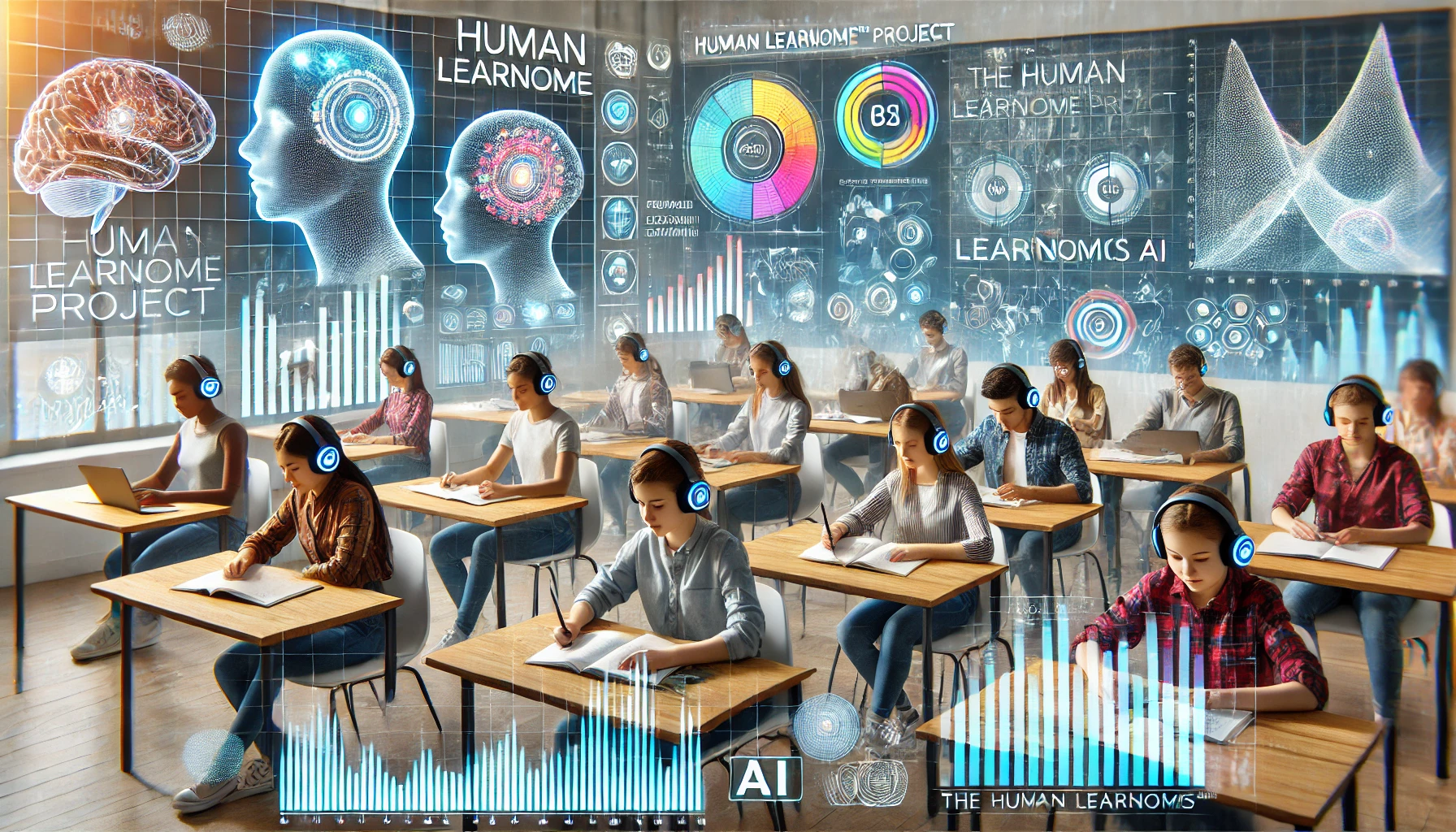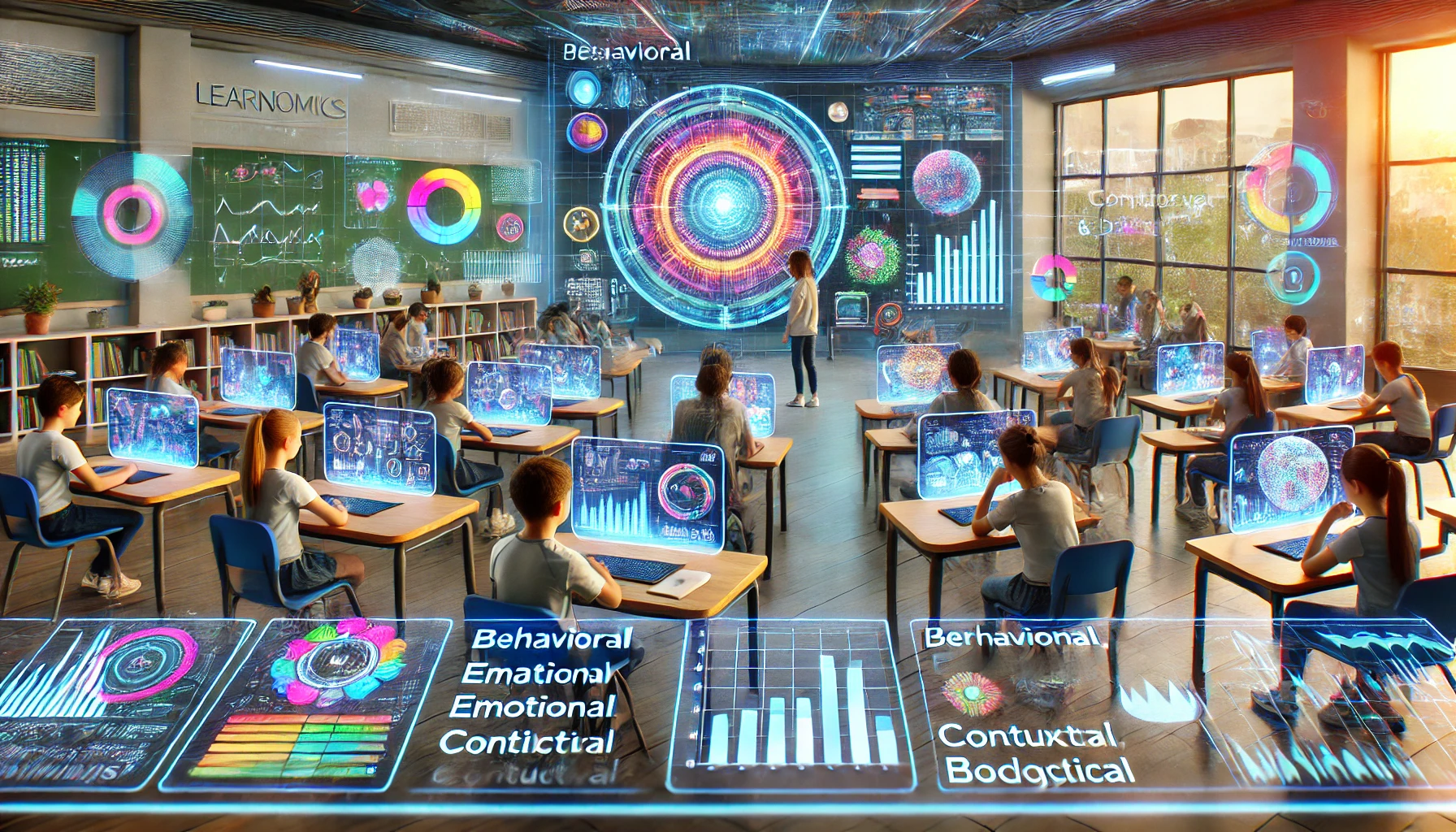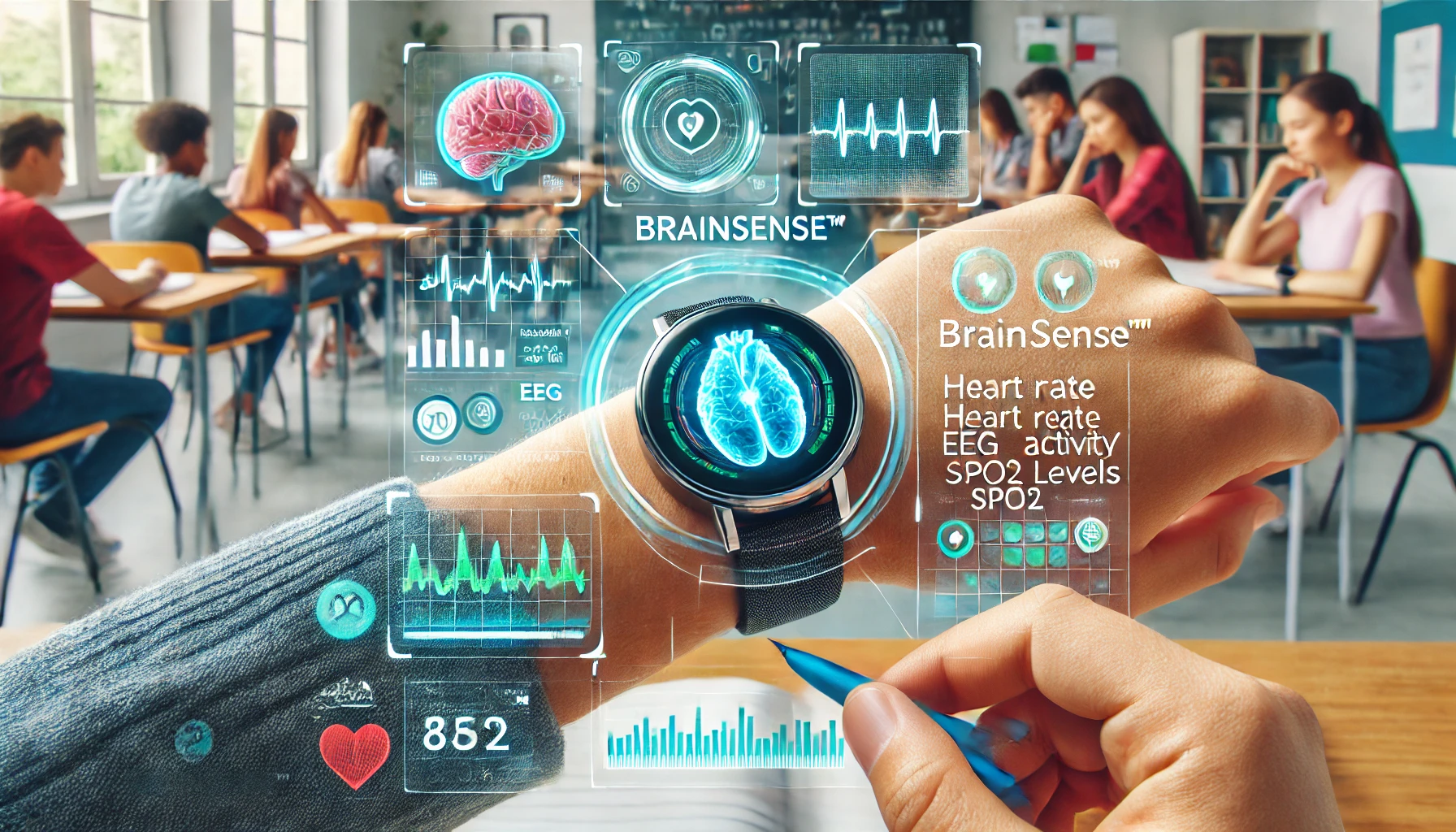The landscape of education is continually evolving, driven by technological advancements that seek to make learning more effective, personalized, and accessible. At the forefront of these innovations is the Learnomics AI Model, a comprehensive framework designed to integrate various facets of a learner’s experience into a single, unified system. Coupled with the Human Learnome Project and the BrainSense™ Wearable Device, this model aims to revolutionize educational experiences and outcomes. This article delves into the Learnomics AI Model’s capabilities, its superiority over existing AI models, and how it stands as a transformative force in educational settings.
The Learnomics AI Model: An Overview
The Learnomics AI Model is an advanced, multi-modal AI framework that incorporates behavioral, emotional, cognitive, contextual, and biological data to create a holistic learner profile. Unlike traditional educational models that primarily focus on academic performance metrics, Learnomics leverages a wide array of data inputs, including:
- Behavioral Data: Tracking study habits, engagement levels, and interaction patterns.
- Emotional Data: Monitoring stress levels, mood fluctuations, and emotional responses.
- Cognitive Data: Analyzing cognitive load, problem-solving abilities, and comprehension.
- Contextual Data: Considering environmental factors like classroom settings and social interactions.
- Biological Data: Utilizing physiological metrics such as heart rate, EEG activity, and skin conductance.
By synthesizing these diverse data points, the Learnomics AI Model can tailor educational experiences to meet the unique needs of each learner, fostering a more personalized and effective learning environment.
The Human Learnome Project
The Human Learnome Project is a pioneering initiative that complements the Learnomics AI Model. It aims to map the diverse aspects of human learning by collecting and analyzing comprehensive data from learners. The project’s goal is to create a detailed blueprint of the learning process, similar to how the Human Genome Project mapped human DNA. Key objectives include:
- Identifying Learning Patterns: Understanding how different factors interact to influence learning outcomes.
- Enhancing Personalized Education: Using insights to develop more tailored and effective educational strategies.
- Promoting Lifelong Learning: Supporting learners of all ages and backgrounds in their educational journeys.
The BrainSense™ Wearable Device
The BrainSense™ Wearable Device is a state-of-the-art smartwatch designed for multimodal data collection, playing a crucial role in the Learnomics AI ecosystem. It collects a wide range of physiological and cognitive data, including:
- Heart Rate and Variability: Monitoring cardiovascular health and stress levels.
- EEG Activity: Measuring brain wave patterns to assess cognitive load and mental states.
- SpO2 Levels: Tracking blood oxygen saturation to ensure physical well-being.
- Skin Conductance: Detecting emotional arousal and stress responses.
- Motion and Activity: Recording physical activity levels and movement patterns.
Comparative Analysis: Learnomics AI vs. Other Models
A comprehensive comparative analysis reveals that the Learnomics AI Model outperforms several popular AI models currently used in educational settings. Here’s how it stacks up against models like GPT-4 (OpenAI), BERT (Google), CLIP (OpenAI), Knewton (EdTech), and IBM Watson Education:
1. Data Integration and Usage:
- Learnomics AI: Integrates extensive multi-modal data (behavioral, emotional, cognitive, contextual, biological) to create a holistic learner profile.
- Other Models: Primarily use traditional educational data (text, performance metrics), with some models integrating visual data (CLIP).
2. Personalization:
- Learnomics AI: Offers highly personalized learning experiences tailored to individual student profiles.
- Other Models: Provide personalization based on interaction and performance data but usually do not integrate emotional and biological data.
3. Real-Time Feedback and Adaptation:
- Learnomics AI: Provides real-time feedback and adaptation based on comprehensive data, including physiological responses.
- Other Models: Offer real-time feedback primarily based on interaction and performance data.
4. Scope of Application:
- Learnomics AI: Focuses on personalized learning, mental health monitoring, and optimizing academic performance with a broad scope of data.
- Other Models: Generally focus on content delivery, question answering, text comprehension, and intelligent tutoring.
5. Comprehensive Learner Profiles:
- Learnomics AI: Creates detailed and holistic learner profiles encompassing various aspects of a student’s learning journey.
- Other Models: Typically create profiles based on performance metrics and interaction data, lacking the depth of multi-modal integration.
6. Innovative Data Types:
- Learnomics AI: Utilizes innovative data types such as EEG, heart rate, and skin conductance to inform learning experiences.
- Other Models: Rely on more traditional educational data, though models like CLIP add visual data integration.
Key Benefits and Advantages
1. Enhanced Personalization: The Learnomics AI Model’s ability to integrate and analyze diverse data types allows it to create highly personalized learning experiences. This level of personalization ensures that each learner receives the right support and challenge, leading to better engagement and academic performance.
2. Real-Time Adaptation: By continuously monitoring physiological and cognitive data through the BrainSense™ Wearable Device, Learnomics AI can adapt learning content in real-time. This dynamic adjustment helps manage cognitive load and stress, preventing burnout and fostering a positive learning environment.
3. Holistic Development: Beyond academic performance, the Learnomics AI Model supports the holistic development of learners. By incorporating emotional and contextual data, the system can address mental health issues, promote well-being, and support social-emotional learning.
4. Data-Driven Insights: Educators and administrators benefit from data-driven insights provided by the Learnomics AI Model. Detailed analytics and reports help identify learning trends, monitor progress, and make informed decisions to enhance the overall educational experience.
5. Scalability and Flexibility: The Learnomics AI Model is designed to be scalable and flexible, making it suitable for diverse educational settings—from K-12 to higher education and professional development. Its adaptability ensures that it can meet the needs of various learning environments and populations.
Integrating the Human Learnome Project and BrainSense™ Wearable Device
The integration of the Human Learnome Project and the BrainSense™ Wearable Device with the Learnomics AI Model significantly enhances its capabilities. The detailed mapping of learning processes provided by the Human Learnome Project offers deeper insights into individual learning patterns and needs. The BrainSense™ Wearable Device adds an extra layer of real-time, physiological data collection, enabling:
- Enhanced Data Collection: Comprehensive data from the Human Learnome Project enriches the AI model’s learning database.
- Real-Time Monitoring: The BrainSense™ Wearable Device allows for continuous monitoring of physiological and cognitive states, providing instant feedback and adaptation.
- Refined Personalization: More precise tailoring of educational content based on the extensive data collected.
- Improved Learning Outcomes: A deeper understanding of learning processes leads to more effective educational strategies and better results.
Conclusion
The Learnomics AI Model, in conjunction with the Human Learnome Project and the BrainSense™ Wearable Device, stands out as a transformative force in education. Offering unparalleled personalization, real-time adaptation, and holistic support, it provides a comprehensive understanding of each learner. This unified model sets a new standard for leveraging AI to enhance learning outcomes and support the overall development of students. As educational institutions continue to embrace technology, the integration of these innovations promises a brighter, more personalized future for learners everywhere.



